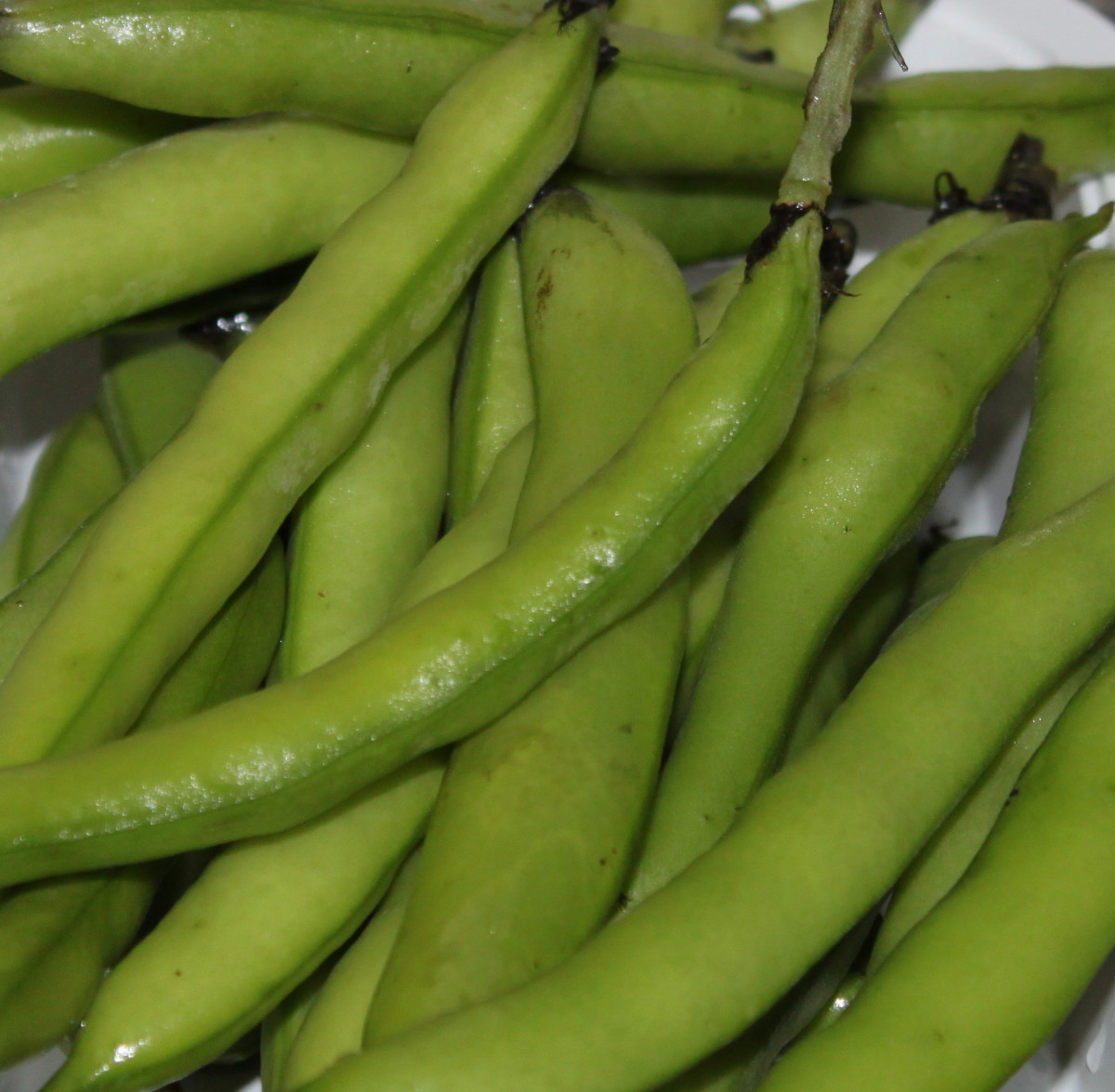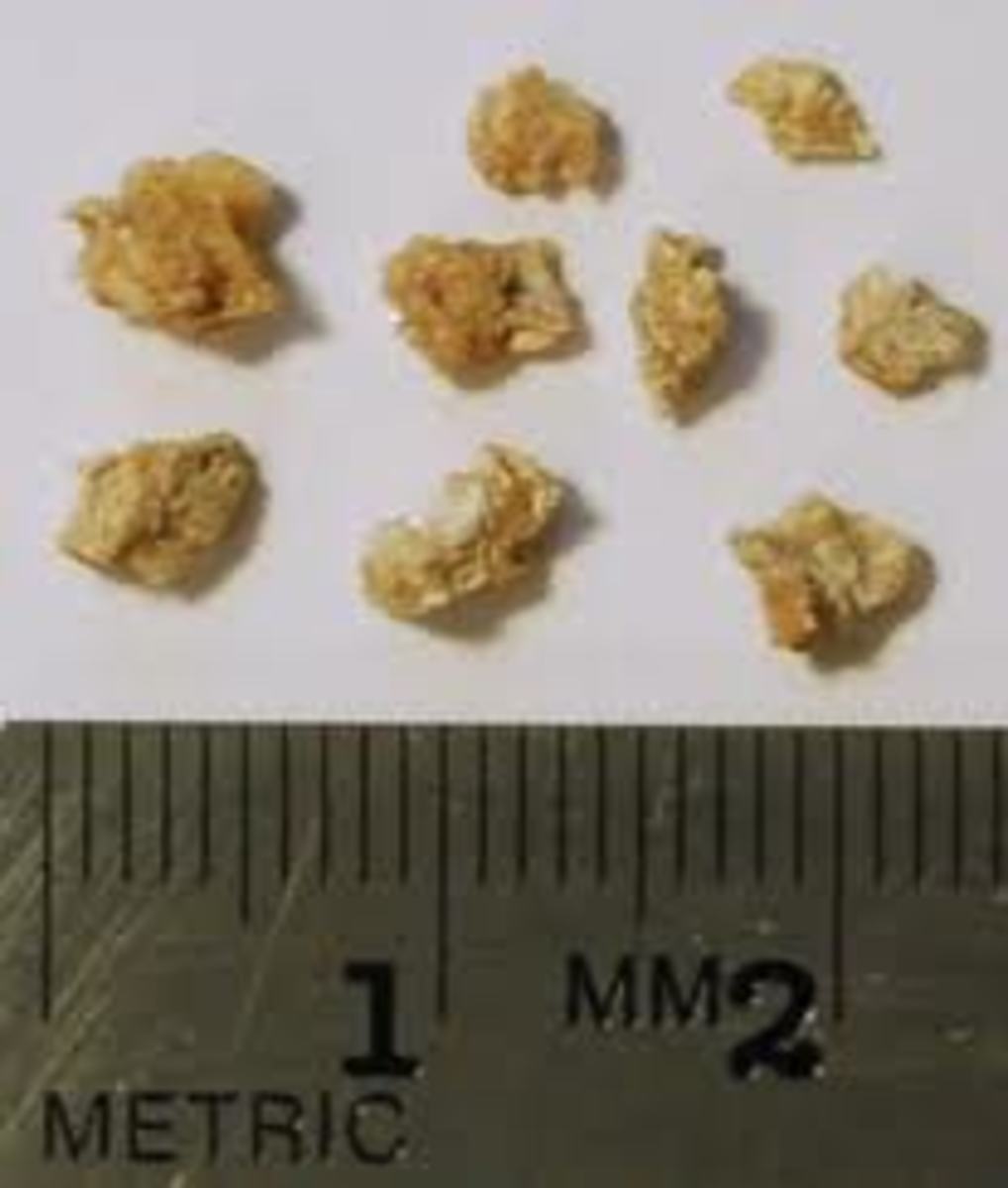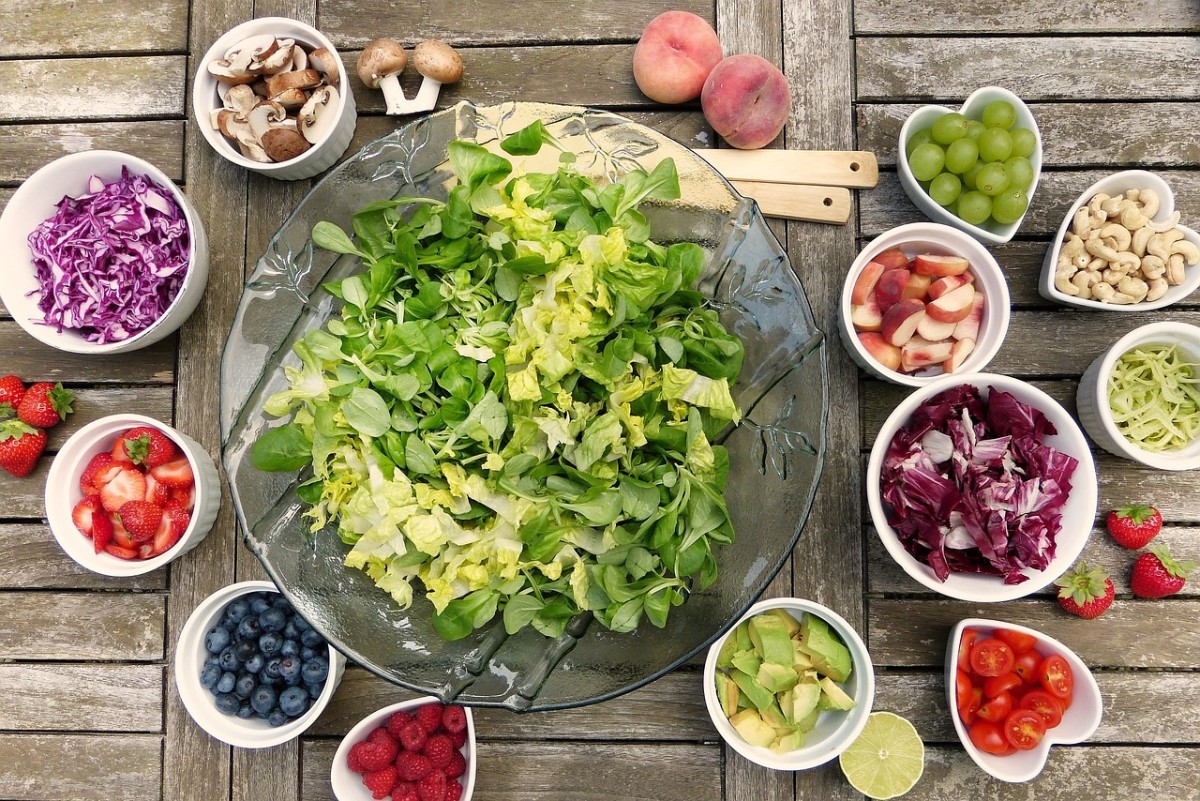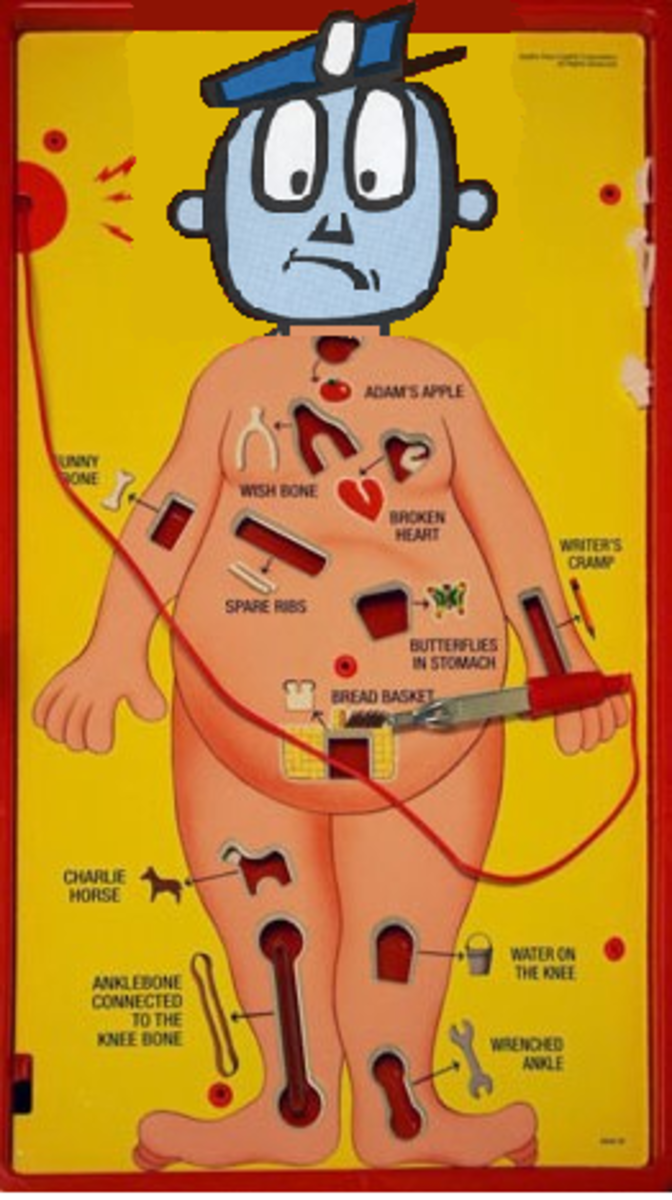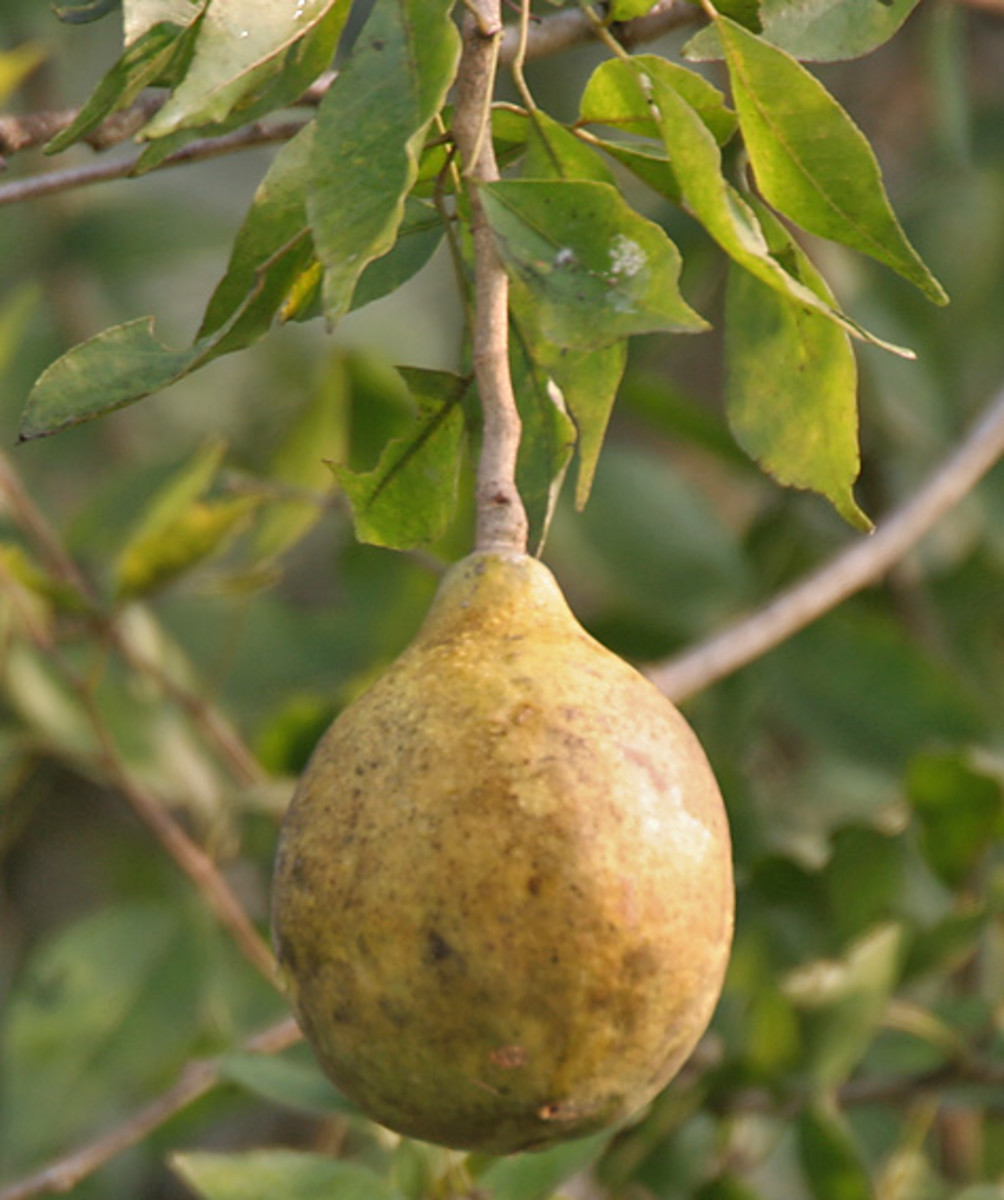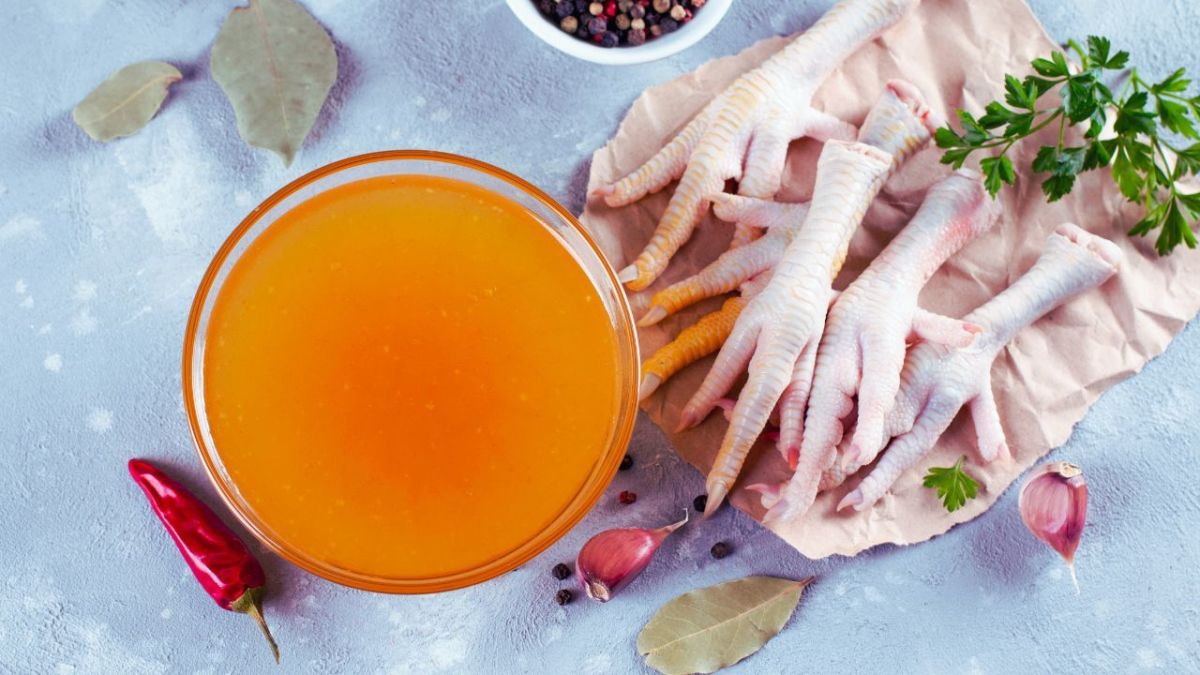What is the Low Oxalate Diet?
Even though there are so many different types of diets out there, many people may not have heard of the "low-oxalate diet". Some may have heard of the word oxalate only in context of calcium-oxalate kidney stones.
It is true that the low-oxalate diet is adopted by people who have a history of forming calcium-oxalate kidney stones. But the low-oxalate diet is also being adopted by people with autoimmune conditions, leaky gut, fibromylagia, leaky gut, vulvar pain, and even autism.
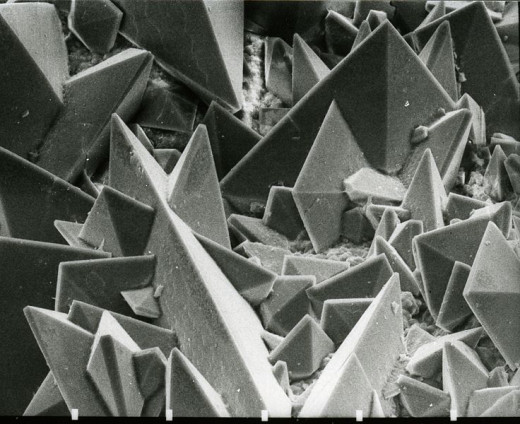
Low-Oxalate Diet for reducing Calcium Oxalate Kidney Stones
Calcium oxalate stones is the most common of the five different types of kidney stones. See how to reduce kidney stones in another article.
Those who have had kidney stones before will know how painful they can be. That is because oxalates are tiny crystals that are very sharp. To the right, see Scanning Electron Micrograph image of calcium oxalate on the surface of a kidney stone. Ouch.
In fact, oxalates evolved as an adaptation of certain plants to cut up the mouths of insects that tries to munch on the plant.
That is why oxalates are typically found in high concentration in leafy green vegetables. Oxalate are found primarily in certain plant foods and are rarely found in animal products.
Calcium and oxalates molecules have a high affinity for each other. And unfortunately, they do not dissolve easily in water. When they bind together in excess within the body, they may form kidney stones.
You may also want to learn about the Paleo Diet as a general diet for healthy individuals.
Healthy Individuals Do Not Need an Low Oxalate Diet
Keep in mind that foods with high oxalates are not necessarily bad. In fact some, of the most nutritious foods (such as spinach and kale) are high in oxalates. Our bodies has the capacity to handle oxalates in foods.
Often foods with high oxalates are also high in calcium. The oxalate and calcium bind in the gut and is passed in the stool without being absorbed into the body -- unless one has a "leaky gut" with excessive intestinal permeability. Many people with autoimmune condition, fibromyalgia, or autism may have leaky gut. And hence a low-oxalate diet for these groups may be appropriate.
For healthy individuals without leaky gut and are able to handle oxalates, they do not need to worry about consuming oxalates from foods, and they do not need to adopt an low-oxalate diet. The low-oxalate diet is only for a sub-group of the population who have challenges with oxalates.
An urine test can give a clue as to a person's oxalate level and help determine if an low-oxalate diet is right or not. Hyperoxaluria is a condition when there is excessive urinary excretion of oxalate. However, the limitation of the test is that oxalate may be high in blood or tissues when it isn't high in urine. Hence, more oxalate may be retained in the body than the urine test suggests.
Low-Oxalate Diet for other conditions
There are other conditions that might benefit from a low-oxalate diet.
Vulvar pain caused by vulvodynia may be helped or reduced by lowering the oxalate content in urine which may otherwise irritate the vulvar tissue. [reference from Dr. Oz website]
People with autoimmune conditions, fibromyalgia, and autism may also be helped by a low-oxalate diet. Many of these groups also have a leaky gut and/or sub-optimal gut flora. A leaky gut may admit calcium and oxalates when it is normally passed in the stool for healthy individuals.
For healthy individual, the gut flora helps metabolize the oxalate, or turn it into something less harmful, and let it pass in the stool. But some people who do not have optimal good bacteria may not be passing oxalates effectively.
Oxalate Challenges and What May Help
Optimal gut flora is very important and people with sub-optimal gut flora may benefit from consuming probiotics in fermented foods or in supplements.
The main oxalate degrading bacteria is oxalobacter formigenes, but there is no probiotic supplement available that contain this bacteria at the time of this writing in 2012. Lactobacillus acidophilus can be found as a probiotic supplement. This bacteria can consume oxalates when it is deprived of its usual food. However, excessive oxalates can kill off Lactobacillus aciophilus.
LowOxalate.info is a great resource for those with oxalate challenges. It writes ...
"it seems clear that those who have had gut issues and reduce dietary oxalate are often seeing their gut function improve or normalize as they lose other chronic problems."
The site also says that our body can sometimes make oxalates when one is getting very high doses of vitamin C or fructose. High oxalates can also result when one is deficiencies in vitamin B6, magnesium or thiamine.
It also has charts linked here indicating the oxalate content of certain foods.
Some Oxalate Content in Foods (gathered from various sources)
High Oxalates
| Medium Oxalate
| Low Oxalate
|
|---|---|---|
Spinach
| Banana
| Red sweet peppers
|
Rhubarb
| Cornstarch
| Zucchini
|
Beets
| Brown rice
| Avocado
|
Soy Products
| Garbanzo Beans
| Apricots
|
Potatoes (white and sweet)
| Collard Greens boiled
| Lemons
|
Most Beans
| Carrots-Boiled
| Mango
|
Seeds
| Sauerkraut
| Peaches
|
Nuts
| Seaweed
| white rice
|
Blackberries
| Lentils - boiled
| coconut
|
Figs
| Kale - steamed
| flax seed
|
Kiwi
| Strawberries
| Bok choy
|
Buckwheat
| Broccoli
| cucumber
|
Flour
| Brussel Sprouts
| Mushrooms
|
Rye
| Onions
| |
Wheat
| Blueberries
| |
Almonds
| cabbage
| |
Celery
| Cauliflower
| |
Orka
| Asparagus
| |
Olives
| ||
Tomatoes
| ||
Carrots raw
|
What foods are high in oxalates?
Note that oxalate lists are very inconsistent and sometime outdated. And that include the list above.
This is due to the fact that there are different cooking methods, different testing methods, different food growing methods, geography of the food, and different types of foods of the same species of varying oxalate levels. In addition, the cutoff between high and low oxalate level is quite arbitrary.
Note that cooking can reduce oxalate levels. Oxalate levels are highest when food is consumed raw. Boiling the food will reduce oxalate levels the most. Anything in between will reduce oxalate moderately. For example, carrots and collard greens are high in oxalates when raw, but medium oxalate when boiled.
Although there are exceptions, many leafy greens, beans, nuts, and seed has high amount of oxalates. Some exceptions are bok choy, lentils, and garbanzo beans which are lower in oxalates.
Wheat and flour contain high oxalates, which is another reason to avoid these foods, in addition to their problem of containing gluten. Some people on a gluten-free diet may try to make baked goods using almond flour. But remember that almonds, as with many nuts, are high in oxalates as well as phytates. So consume in moderation when using almond flour.
Paul Jaminet writes that ...
"... by far the largest source of oxalate in the American diet is spinach. Spinach by itself accounts for over 40% of all oxalate consumed by Americans; potatoes for about 10%. ... Other conditions can elevate calcium or oxalate in the urine and increase the risk of calcium oxalate kidney stones. This is especially likely in people who are deficient in magnesium or who don’t eat citrate."
Both white and sweet potatoes are high in oxalates. But what about yams? Here is what one article says ...
"Phytic acid contents of the yams were low, with values ranging from 58.6 to 198.0 mg/100 g dry matter. Total oxalate levels in yam tubers were found to be in the range of 486-781 mg/100 g dry matter, but may not constitute a nutritional concern since 50-75% of the oxalates were in the water-soluble form. The overall results are suggestive of the nutritional superiority of yams compared to other tropical root crops." [reference]
Problems with Low Oxalate Diet
Many of the leafy green vegetables contain healthful phytonutrients, vitamins, and antioxidants. For example, green vegetables are good source of folate. Unfortunately, they also tend to be high in oxalates. Green vegetables, whole grains, beans also are a source of healthy fiber that prevents constipation.
Those on a low-oxalate diet who avoid such foods, must make sure to get their phytonutrients by more carefully selecting their foods to avoid nutritional deficiencies. Add supplements as needed and appropriate.
Eat broccoli, bok choy, califlower, cabbage, blueberries and other lower oxalate foods.
Keep in mind that even on a low-oxalate diet, one do not need to eliminate all oxalates from the diet. Depending on the severity of one's condition, one can consume low oxalate foods or even high oxalate foods in limited quantities.
Webinar on Low-Oxalate Diet
To learn more about the low-oxalate diet, watch the below Hawthorn University webinar presented by Julie Matthews, CNC and author of the books Cooking to Heal and Nourishing Hope for Autism.
She specializes in diets for autism and her site is NourishingHope.com
Note:
This article is for general informational purposes only and is not intended to diagnosis or treat any specific conditions. Author is not a medical professional and the information contained is only opinion at the time of writing.


